
Submitted by Phillip Schulz
Russell FSS Building, Kansas, 1948-49
Photo taken in front of the Russell Flight Service Station just after the facility opened in the late forties. Names are unknown.

Submitted by Phillip Schulz
Russell FSS Building, Kansas, 1948-49
Photo taken in front of the Russell Flight Service Station just after the facility opened in the late forties. Names are unknown.
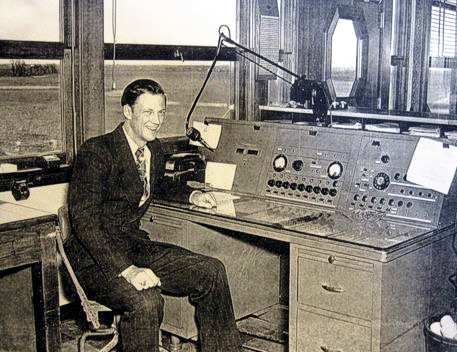
Submitted by Phillip Schulz
Russell FSS (RSL) Inflight, Kansas
Name unknown
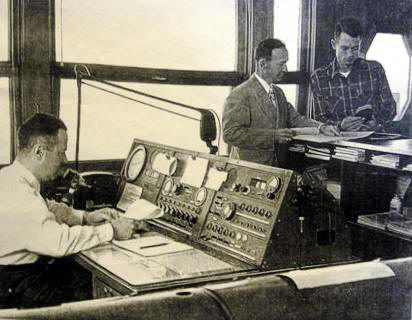
Submitted by Phillip Schulz
Russell FSS (RSL) Inflight, Kansas
Employee names unknown.
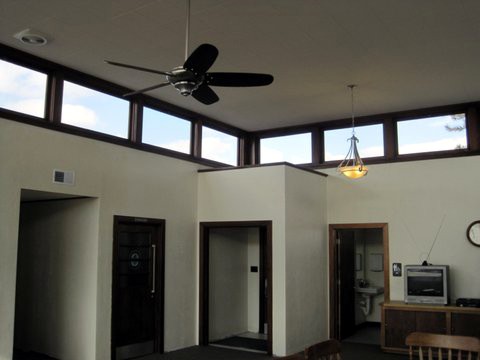
Submitted by Phillip Schulz
Russell FSS Building, Kansas, 2011
Photo of interior after restoration. First door on left leads to the north room (original FSS operations), second door was entrance to the FSS office, third door is entry door to the building, and last door on right is the men’s restroom. The restaurant was to the right of this room and this room was the dinning area.
The building was designed by an architect with Kansas License # 1. Submitter of this photo requested the city to list this site on the State and National registry of historic buildings but has not had any luck.
World War II Flight Crew Memorial
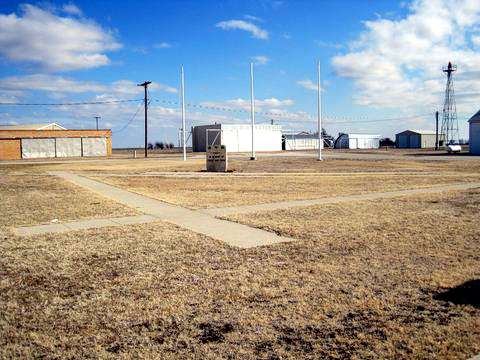
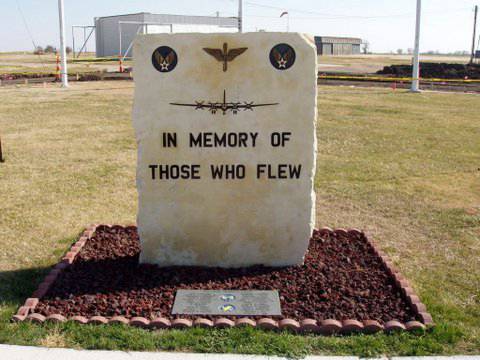 Submitted by Phillip Schulz
Submitted by Phillip Schulz
Russell FSS (RSL) World War II Flight Crew Memorial, Kansas, 2011
This memorial (pathways and vertical monument center of photo) was created by Phillip Schulz and others and placed in front of the Russell FSS building where the Bonanza’s used to park.
It is dedicated to the memory of the 27 airmen that lost their lives in a B-17 and three B-29s that went down in Russell County during WWII. They were en route from Walker Army Airfield just 17 miles to the west of Russell. The sidewalks are laid out similar to the three runways at Walker AAF. There is a granite marker at the base of the large limestone marker with their names engraved on it.
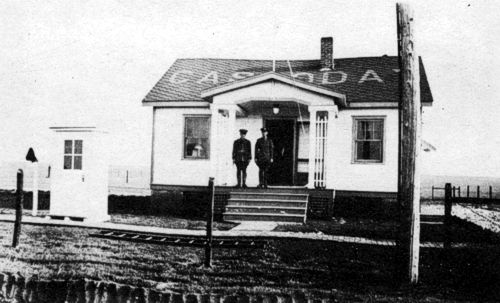
Cassoday Airway Radio Station, Kansas
Station was under the supervision of the Fort Worth, Texas office. Date unknown.
![]()
Submitted by Steve Owen
Cassoday Radio Beacon Site, Kansas, 1940
Aerial view taken by Life Photographer, David Scheram

Submitted by Phillip Schulz
Russell FSS Building, Kansas, 1949
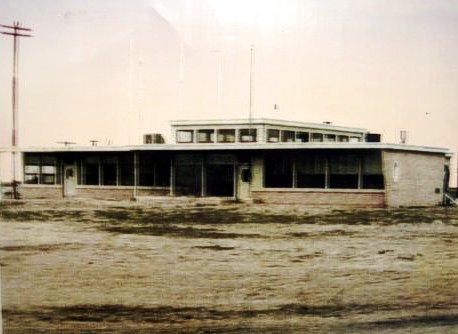
Submitted by Phillip Schulz
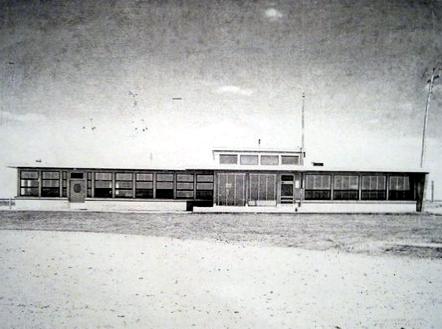
Submitted by Phillip Schulz
Russell FSS Building, Kansas, 1948-49
The city of Russell, about 2011, uncovered the windows around the top and opened and removed the false ceilings
![]()
Cassoday Airway Beacon Site, #41, Kansas
An aeronautical bulletin was published about the Cassoday airfield which identified it as Site #41 along the airway. The bulletin further detailed the field as being operated by the Department of Commerce & having 2 grass runways in an ‘L’ formation, 2,600 feet long (see airport diagram).
In the northwest corner of the airfield was a 2-million candlepower 24 inch rotating beacon, which rotated at 6 RPM. The newly-built field had few amenities (no fuel, repairs, or telegraph) but did have nighttime lights around the boundary of the airfield.
By 1931, the starting point of the airway had been changed from Dallas to Amarillo, and this resulted in a renumbering of the airfields & beacons. Cassoday was changed from Site #41 to Site #34 and, according to the 1931 Bulletin #2 this beacon site was upgraded to a Flight Service Station (FSS), commissioned February 1931, and included course lights and a weather teletype.
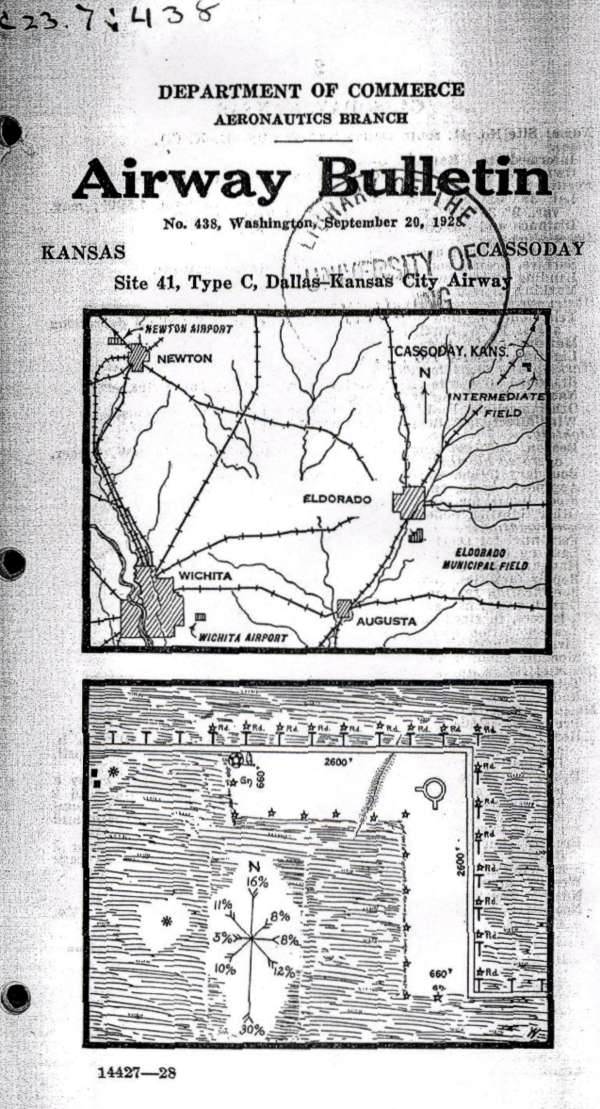
Cassoday, Kansas, Site #41, Dallas to Kansas City Airway Map, Sep 20, 1928
Department of Commerce Airway Bulletin no. 428, Washington DC, depicting the airway and the Cassoday Intermediate Field layout (lower diagram). The field was operated by the Department of Commerce using two grass runways in an ‘L’ formation, 2,600 feet long.
In the northwest corner of the airfield was a 2-million candlepower 24 inch rotating beacon which rotated at 6 RPM. The newly-built field had few amenities (no fuel, repairs, or telegraph) but did have nighttime lights around the boundary of the airfield.
By 1931, the starting point of the airway had been changed from Dallas to Amarillo, and this resulted in a renumbering of the airfields & beacons. Cassoday was changed from Site #41 to Site #34 and, according to the 1931 Bulletin #2, this beacon site was upgraded to a Flight Service Station (FSS), commissioned February 1931, and included course lights and a weather teletype.